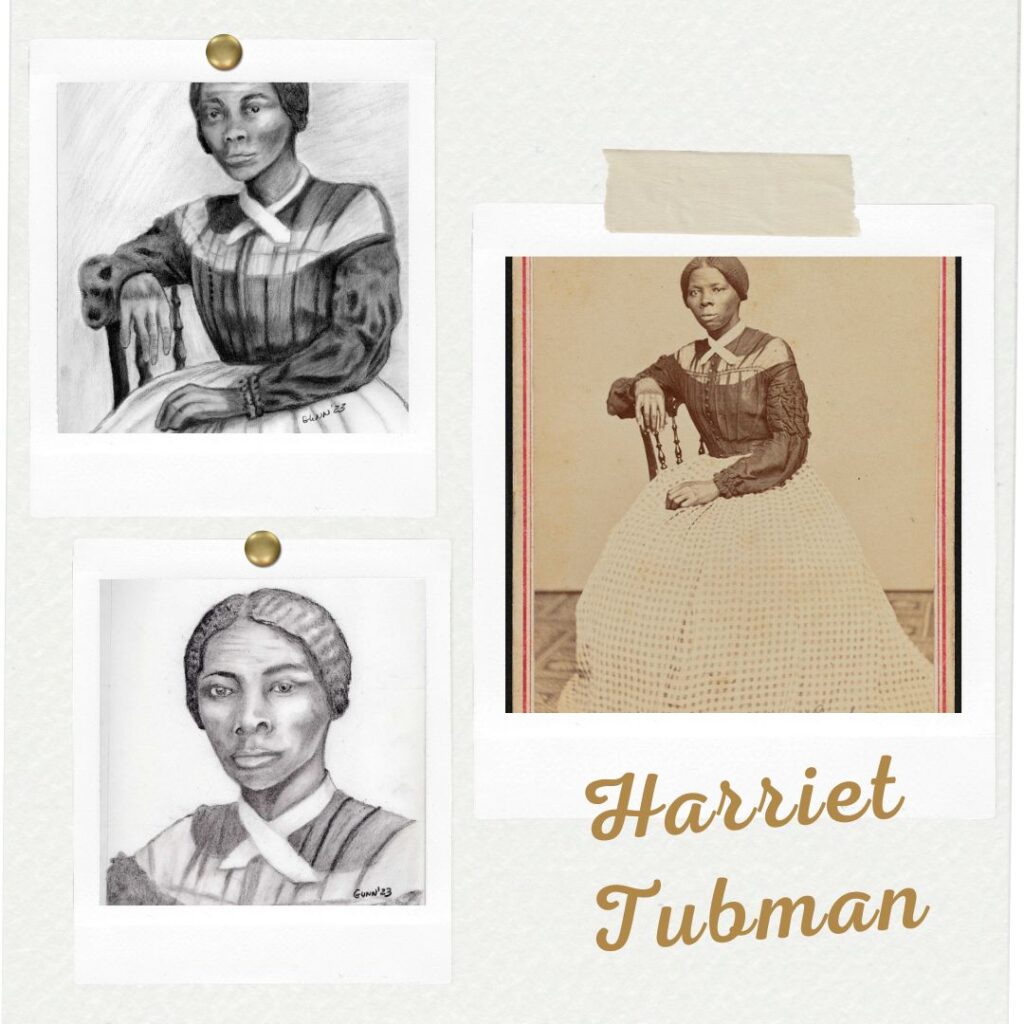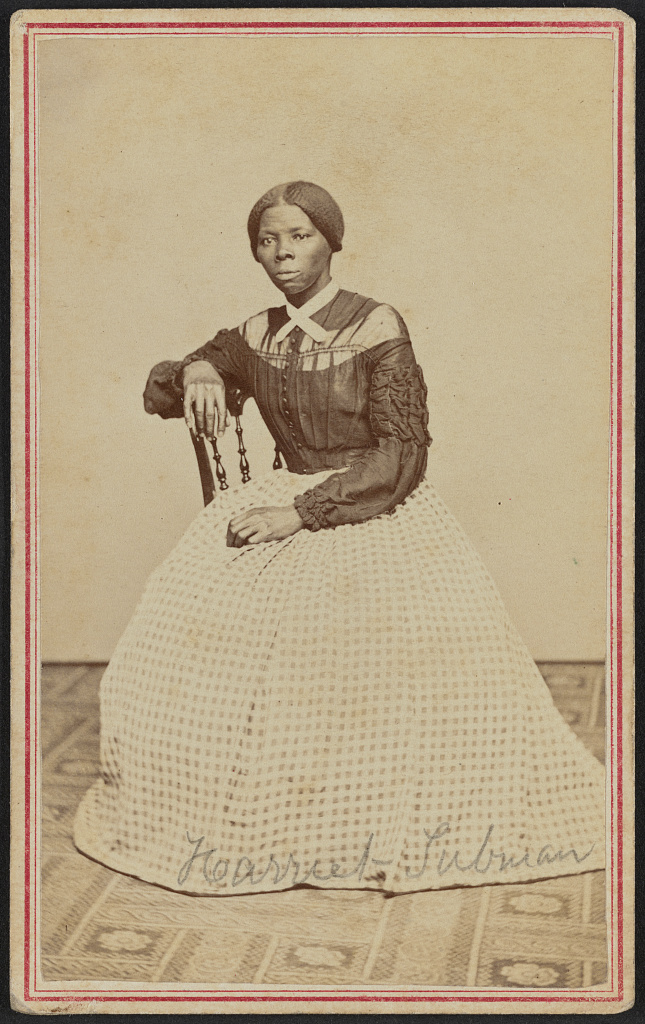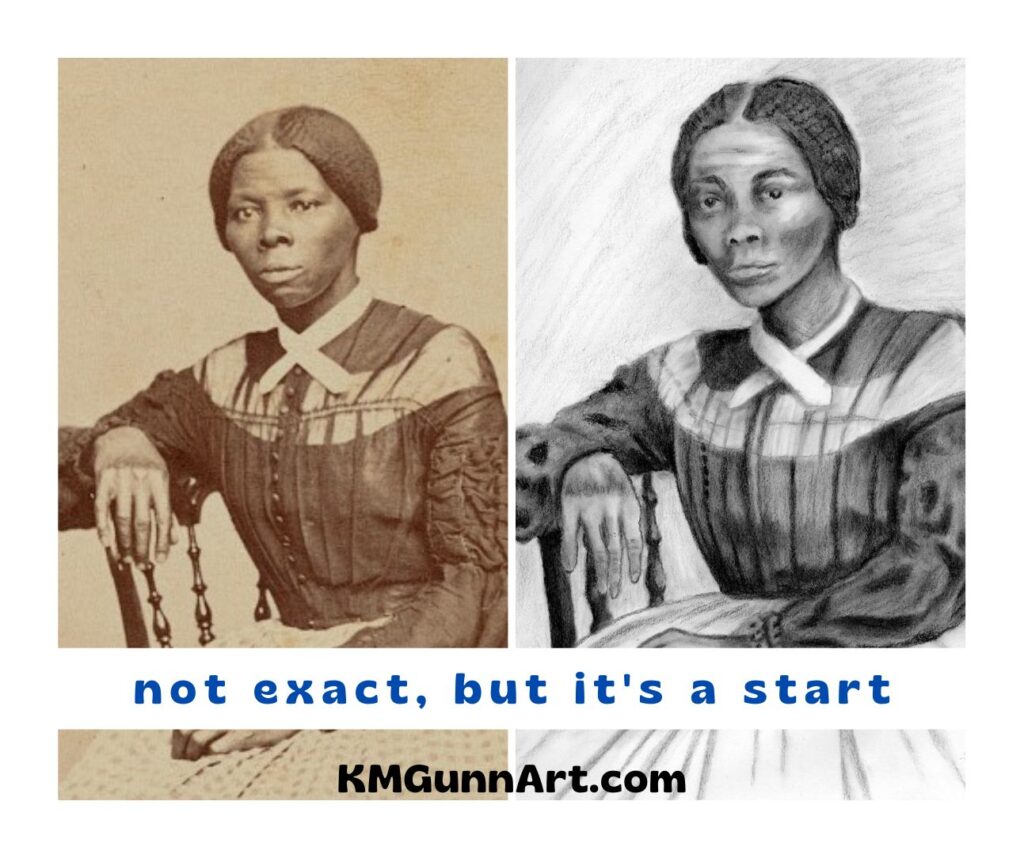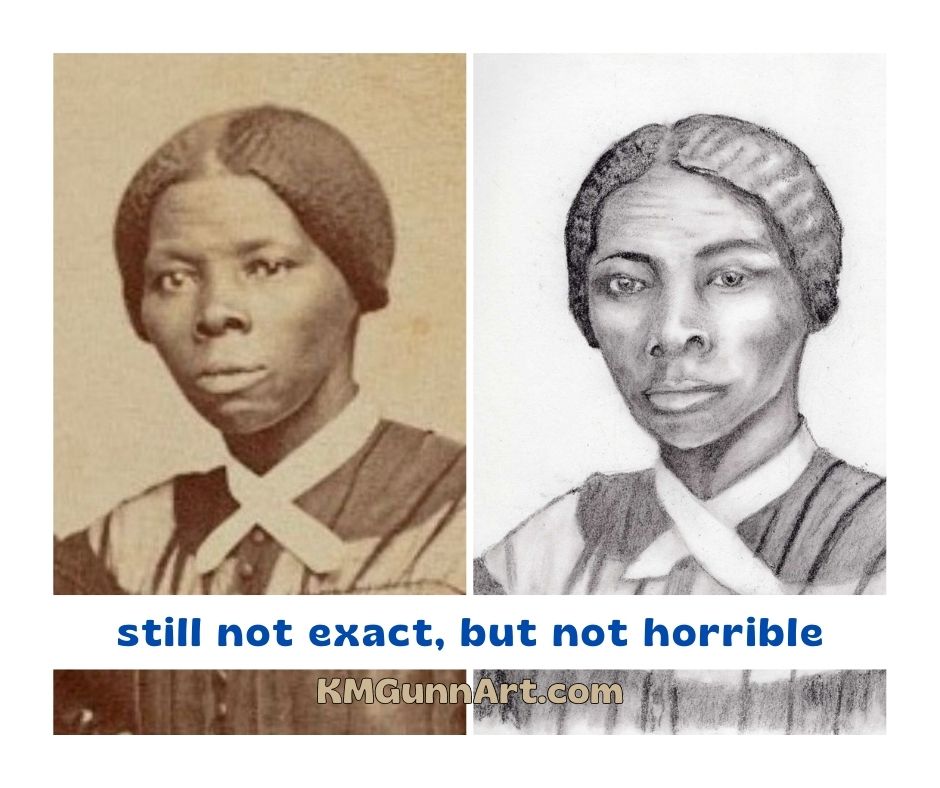Moving right along in my attempt to get caught up on blogging my 100 faces art challenge is John Chapman, a portrait of a famous American folk hero done in traditional black charcoal. You might not recognize his real name, but you have probably heard his nickname: Johnny Appleseed. He was a colorful enough character to fill up a whole book, but I promise I’ll keep this short enough to still only be a blog post in length.
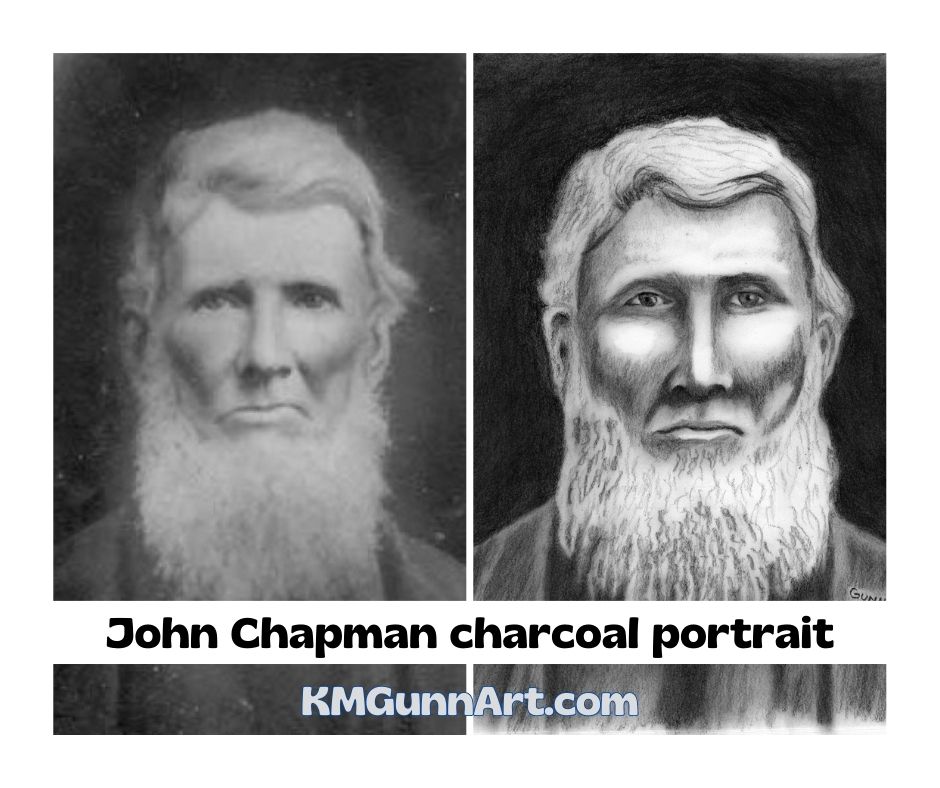
Better known as Johnny Appleseed
The main points about Chapman are fanciful enough to have earned him the colorful nickname of Johnny Appleseed, which started throughout what was then called the Northwest Territory while he was still very much in his prime as a man and as a businessman. Even by early 19th century American standards, he was considered a very eccentric character, though a lot of sources shy away from the reason behind that.
In fact, I was surprised that not only did my dad not recognize the name John Chapman, but he also had never heard why he was often seen barefoot with a cooking pot as a hat. For the record, my dad was a history major in college and has lived in Fort Wayne, Indiana (where Chapman retired to, and was buried) since the mid-1970s, so it is possible to not know that Johnny Appleseed was a devout follower of the Swedish Christian mystic Emmanuel Swedenborg.
Because Swedenborg was against grafting, Chapman planted as many apple seeds as he could and nurtured them. Another factor of his legacy lies in the requirements for making a homestead claim in the region: planting a fruit orchard – even a small one – was one of the major factors that would get the homestead claim approved. So, when Johnny Appleseed came into your area with several young apple trees, it just made sense to buy some and plant them near your home. Even though most wouldn’t be good for eating straight off the tree, all could be used in making hard cider.
Only reference photograph
I could find only one historical photograph of John Chapman, and that is this one taken sometime between his birthday in March and his day of death in September of 1845. The reason there is only one is quite simple: he achieved his local legend status prior to photography being invented and becoming available to the broader public. As was the style of early photo portraiture, the photo shows most of his body as opposed to being a close-up of his face.
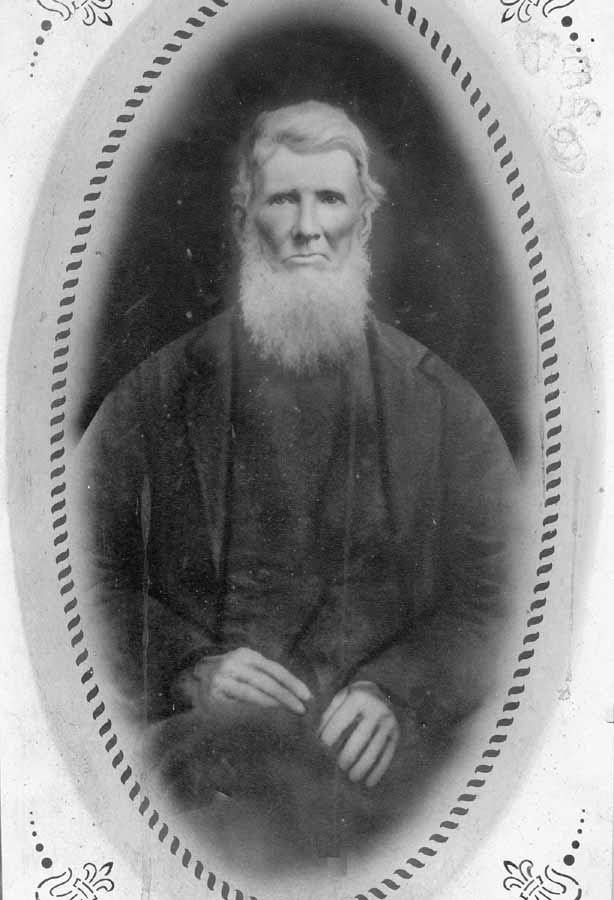
Portrait in black charcoal
I wanted my charcoal portrait to be only a close-up of his face, so some cropping of the original and enlarging was necessary. Then it was just a matter of gridding the crop and putting charcoal to sketchbook. I even made a cute collage showing the progression. U chose to use traditional black charcoal just because I liked the value contrast of his white hair against the black background.
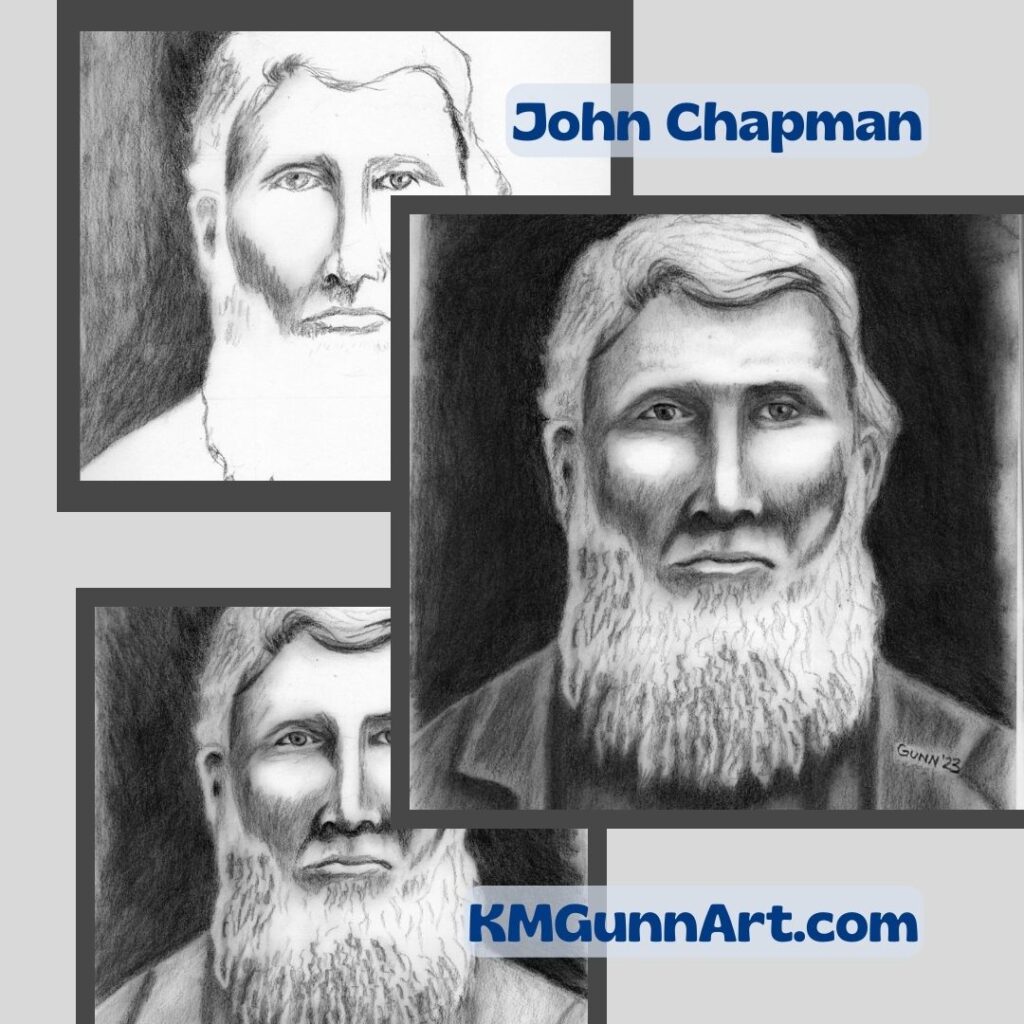
Applying the after-action-review process to my charcoal portrait of John Chapman
I learned a rather useful mental tool in my time in the army, the after-action review (of course we abbreviated that to AAR). The format for it was to first summarized what happened, then to discuss three things that needed improvement, and to finish up with three things that went well. I decided to apply this to all 100 faces I draw and paint for this challenge. I may not have all the points for an official AAR, but the general practice of finding thing that could be improved and finishing up with things done well is a very practical and valid learning method.
What could be improved
The big thing that jumps out at me when looking at the finished portrait is that I either drew or shaded his face too fat. His face in the original photo is lean from his years of voluntary austere living. I probably could have shaded his beard a little better. It looks fuller in my drawing than in the photograph. I also got the one ear too low, and did not notice until just today.
What turned out well
I am pleased that I was able to catch and correct the eye placement early enough that it didn’t mess up the portrait! Given that the paper does not tolerate much erasing, that is a big thing in my mind. I was also pleased with the overall look to this drawing: this is obviously an older man with white hair. Basically, he looks like a real person, so I am counting that as a win.
Newest portraits on Facebook
Just to let everyone know: I do post the newest face I am doing on my art page on Facebook because that is part of my accountability. My page is open to all the public, not just FB members, so other than Meta wanting you to login or sign up, you ought to be able to check there and see what I’ve posted most recently. I even post in-progress scans sometimes, like yesterday’s peek at my number eight.

